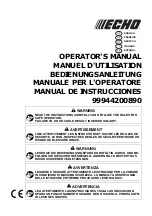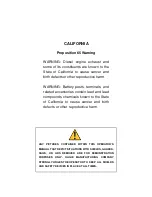
Before Driving
Check local and state laws governing projection of objects beyond the perimeter of a vehicle. Be aware of
the width and height of your cargo since low clearance branches, bridges, and parking garages can affect the
load.
1. Lift the cargo onto the Cargo Carrier. Place heavy, large objects on first and evenly distribute the weight
so that the center of gravity is within the middle third of the platform.
2. Secure the cargo to the Cargo Carrier. Make sure all bolts, straps, knobs and locks are firmly attached
and locked before every trip. (Straps sold separately, visit ReeseBrands.com to view cargo securing
products and find a store near you).
NEVER use elastic straps or belts to secure cargo.
3. CHECK BOTH THE CARGO AND THE Cargo Carrier ARE SECURE.
If your Cargo Carrier is not secure, DO NOT use your Cargo Carrier. Remember cargo can
shift or the Cargo Carrier can loosen during travel. Readjust as needed. If movement continues,
stop use.
To Prevent Serious Injury or Death:
•
INSPECT for signs of wear, corrosion, and fatigue BEFORE each use. DO NOT use
if bent or deformed.
•
Do not exceed your
Cargo Carrier’s weight capacity or your hitch tongue weight
rating, whichever is lower. The capacity of your Cargo Carrier is 500 lb. (227 kg)
with the 2” shank and 300 lb. (136 kg) with the 1-1/4” shank.
•
DO NOT use Cargo Carrier to transport people, animals, or flammable liquids.
To Prevent Serious Injury, Death and Property Damage:
•
REDUCE YOUR SPEED. Your vehicle can handle differently when transporting cargo.
•
ALWAYS obey all posted speed limits and be aware of traffic conditions.
•
FREQUENTLY check your Cargo Carrier and the cargo is secure. Cargo can shift or your
Cargo Carrier can loosen during travel. Readjust as needed. If movement continues,
stop use.
•
ALWAYS use caution when opening hatch when using your Cargo Carrier to transport
cargo to prevent damage to vehicle.
While Driving

































